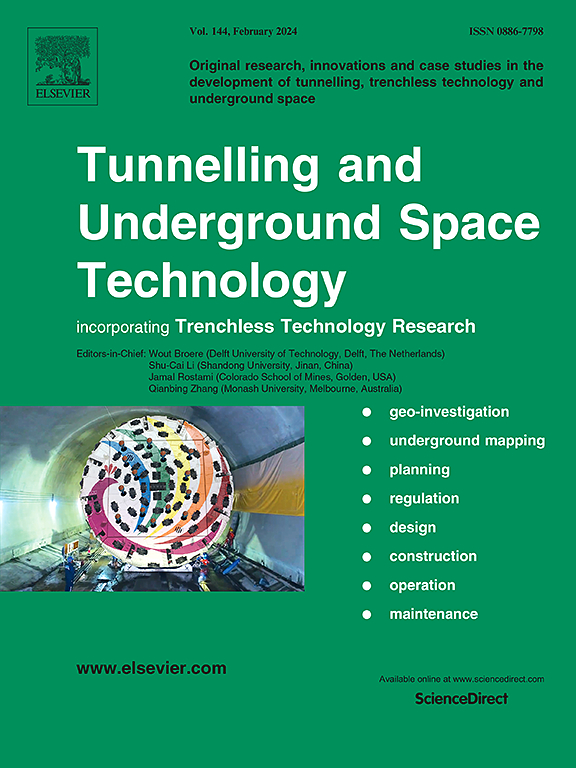Critical velocity and back-layering length of arched tunnels with large sectional aspect ratios under different fire-source–side-wall distances
IF 6.7
1区 工程技术
Q1 CONSTRUCTION & BUILDING TECHNOLOGY
引用次数: 0
Abstract
With the continuous advancement of shield tunneling technology, the size of shield machines has also increased significantly. It is necessary to study the fire behavior in arched highway tunnels with large sectional aspect ratios under longitudinal ventilation. In a vehicle fire, the vehicle typically stops near the tunnel sidewall. This work used experiments and numerical simulations to investigate the influence of different fire source offset positions on the critical velocity in arched tunnels with large sectional aspect ratios. The results showed that: (1) In an arched tunnel, the critical velocity first decreases and then increases with increasing distance between the fire source center and the sidewall. (2) For car fires in arched tunnels, if the fire source is located in the center of the tunnel, the critical velocity is similar to that of the near-wall fire, and it does not always increase as the fire source approaches the sidewall. The predictive model for the critical velocity of arched tunnel offset fires with different sectional aspect ratios has been established. (3) In large section aspect ratio arched tunnels, the influence of different fire source distances from the sidewall on the back-layering length is more pronounced than in tunnels with small aspect ratios. In near-wall fires, the dimensionless control velocity still has a linear relationship with the dimensionless back-layering length in arched tunnels.
不同火源侧壁距离下大断面纵横比拱形隧道临界流速及后层长度
随着盾构掘进技术的不断进步,盾构机的尺寸也显著增大。研究大断面宽高比公路拱形隧道在纵向通风条件下的火灾行为是十分必要的。在车辆火灾中,车辆通常停在隧道侧壁附近。采用实验和数值模拟相结合的方法,研究了不同火源偏移位置对大断面纵横比拱形隧道临界速度的影响。结果表明:(1)随着火源中心与巷道侧壁距离的增加,巷道临界速度先减小后增大;(2)对于拱形隧道内的汽车火灾,当火源位于隧道中心时,其临界速度与近壁火灾相似,并不是随着火源靠近侧壁而不断增大。建立了不同截面宽高比下的拱形巷道偏移火灾临界速度预测模型。(3)在大断面宽高比拱道中,不同火源距侧壁距离对后层长度的影响比小断面宽高比拱道更为明显。在近壁火灾中,无量纲控制速度与拱道无量纲后层长度仍呈线性关系。
本文章由计算机程序翻译,如有差异,请以英文原文为准。
求助全文
约1分钟内获得全文
求助全文
来源期刊

Tunnelling and Underground Space Technology
工程技术-工程:土木
CiteScore
11.90
自引率
18.80%
发文量
454
审稿时长
10.8 months
期刊介绍:
Tunnelling and Underground Space Technology is an international journal which publishes authoritative articles encompassing the development of innovative uses of underground space and the results of high quality research into improved, more cost-effective techniques for the planning, geo-investigation, design, construction, operation and maintenance of underground and earth-sheltered structures. The journal provides an effective vehicle for the improved worldwide exchange of information on developments in underground technology - and the experience gained from its use - and is strongly committed to publishing papers on the interdisciplinary aspects of creating, planning, and regulating underground space.
 求助内容:
求助内容: 应助结果提醒方式:
应助结果提醒方式:


